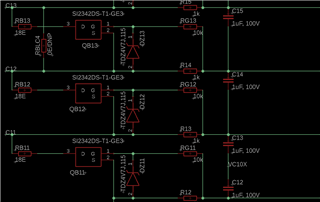Other Parts Discussed in Thread: STRIKE
We've been using BQ694003 in our BMS for quite a while now and we recently faced a very strange issue with a 14S13P pack.
All the cells in cell group 2 (C6 to C10) are at 0V. When we checked the logs, we saw the AFE reporting cell connection error. All the other cells are at 3.7V and are working fine without any problems.
The questions we have are, 1, how did those cells go down to 0V? The AFE should cut off the discharge right? Did it discharge through the balancing circuit?
2, Apart from the possibility of a physical disconnection of the cell connector, can any other passive component failure cause the AFE to report a cell connection error? For ex, maybe the reference for cell group 2 was lost or CAP2 failed?


